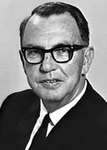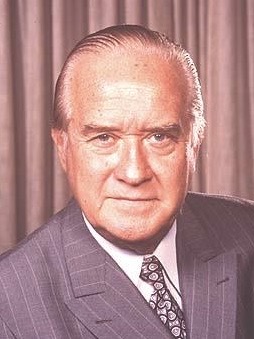
Sir Robert William Askin, GCMG, was an Australian politician and the 32nd Premier of New South Wales from 1965 to 1975, the first representing the Liberal Party. He was born in 1907 as Robin William Askin, but always disliked his first name and changed it by deed poll in 1971. Before being knighted in 1972, however, he was generally known as Bob Askin. Born in Sydney in 1907, Askin was educated at Sydney Technical High School. After serving as a bank officer and as a Sergeant in the Second World War, Askin joined the Liberal Party and was elected to the seat of Collaroy at the 1950 election.

John Brophy Renshaw was an Australian politician. He was Labor Premier of New South Wales from 30 April 1964 to 13 May 1965. He was the first New South Wales Premier born in the 20th century.

The Division of Reid is an Australian electoral division in the state of New South Wales.

Ku-ring-gai was an electoral district of the Legislative Assembly in the Australian state of New South Wales. The electorate covers the suburbs and parts of the suburbs of Gordon, Hornsby, Killara, Lindfield, Normanhurst, North Turramurra, North Wahroonga, Pymble, South Turramurra, Thornleigh, Turramurra, Wahroonga, Waitara, Warrawee and West Pymble.

A general election for the New South Wales Legislative Assembly was held in the state of New South Wales, Australia, on Saturday 1 May 1976. The result was a narrow win for the Labor Party under Neville Wran—the party's first in the state in more than a decade.

The 2010 Australian federal election was held on Saturday, 21 August 2010 to elect members of the 43rd Parliament of Australia. The incumbent centre-left Australian Labor Party led by Prime Minister Julia Gillard won a second term against the opposition centre-right Liberal Party of Australia led by Opposition Leader Tony Abbott and Coalition partner the National Party of Australia, led by Warren Truss, after Labor formed a minority government with the support of three independent MPs and one Australian Greens MP.
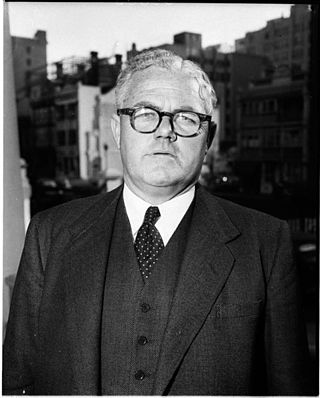
Philip Henry (Pat) Morton was an Australian businessman and politician. Born in Lismore in Northern New South Wales to a prominent political family and educated at Lismore High School, Morton left school at fourteen to be employed in a legal firm, before branching out into various businesses. Moving to Sydney, Morton first entered politics in 1944 as an Alderman on Mosman Municipal Council, rising to be Mayor in 1946. Morton then entered the New South Wales Legislative Assembly on 3 May 1947, representing the Electoral district of Mosman for the Liberal Party.
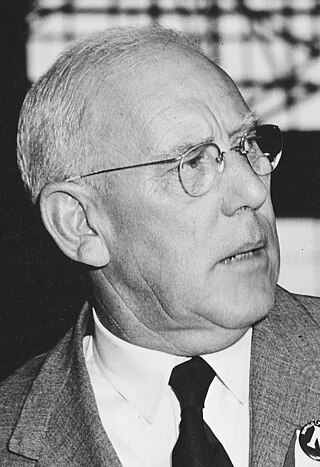
The 1950 New South Wales state election was held on 17 June 1950. It was conducted in single member constituencies with compulsory preferential voting and was held on boundaries created at a 1949 redistribution. The election was for all of the 94 seats in the Legislative Assembly, which was an increase of 4 seats since the previous election.

The 1956 New South Wales state election was held on 3 March 1956. It was conducted in single member constituencies with compulsory preferential voting and was held on boundaries created at a 1952 redistribution. The election was for all of the 94 seats in the Legislative Assembly.

The 1959 New South Wales state election was held on 21 March 1959. It was conducted in single member constituencies with compulsory preferential voting and was held on boundaries created at a 1957 redistribution. The election was for all of the 94 seats in the Legislative Assembly.

The 1962 New South Wales state election was held on 3 March 1962. It was conducted in single member constituencies with compulsory preferential voting and was held on boundaries created at a 1961 redistribution. The election was for all of the 94 seats in the Legislative Assembly.
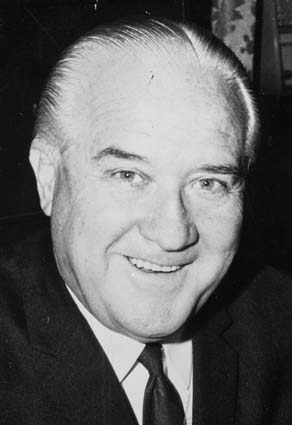
The 1965 New South Wales state election was held on 1 May 1965. It was conducted in single member constituencies with compulsory preferential voting and was held on boundaries created at a 1961 redistribution. The election was for all of the 94 seats in the Legislative Assembly.
New South Wales politics takes place in context of a bicameral parliamentary system. The main parties are the Liberal and National parties of the governing Coalition and the Australian Labor Party. Other minor political parties include the Greens, Shooters, Fishers and Farmers Party and One Nation, along with multiple independents.
The Askin–Cutler ministry (1965–1968) or First Askin ministry was the 62nd ministry of the government of New South Wales, and was led by the 32nd Premier, Bob Askin, of the Liberal Party in coalition with the Country Party, led by Charles Cutler. The ministry was the first occasion in the history of government in New South Wales that the Liberal and Country Party formed a coalition in government. It was also the first of six occasions when Askin was Premier; and when Cutler was Deputy Premier.
The Askin–Cutler ministry (1968–1969) or Second Askin ministry was the 63rd ministry of the Government of New South Wales, and was led by the 32nd Premier, Bob Askin, of the Liberal Party in coalition with the Country Party, led by Charles Cutler. It was the second of six occasions when Askin was Premier; and when Cutler was Deputy Premier.
The Askin–Cutler ministry (1969–1971) or Third Askin ministry was the 64th ministry of the Government of New South Wales, and was led by the 32nd Premier, Bob Askin, of the Liberal Party in coalition with the Country Party, led by Charles Cutler. It was the third of six occasions when Askin was Premier; and when Cutler was Deputy Premier.
The Askin–Cutler ministry (1971–1973) or Fourth Askin ministry was the 65th ministry of the New South Wales Government, and was led by the 32nd Premier, Bob Askin, of the Liberal Party in coalition with the Country Party, led by Charles Cutler. It was the fourth of six occasions when Askin was Premier; and when Cutler was Deputy Premier.
The Askin–Cutler ministry (1973) or Fifth Askin ministry was the 66th ministry of the government of New South Wales, and was led by the 32nd Premier, Sir Robert Askin, of the Liberal Party in coalition with the Country Party, led by Sir Charles Cutler. It was the fifth of six occasions when Askin was Premier and when Cutler was Deputy Premier.
The Askin–Cutler ministry (1973–1975) or Sixth Askin ministry was the 67th ministry of the government of New South Wales, and was led by the 32nd Premier, Sir Robert Askin, of the Liberal Party in coalition with the Country Party, led by Sir Charles Cutler. It was the sixth and final occasion when Askin was Premier; and when Cutler served as Deputy Premier to Askin.

The 2023 New South Wales state election was held on 25 March 2023 to elect the 58th Parliament of New South Wales, including all 93 seats in the Legislative Assembly and 21 of the 42 seats in the Legislative Council. The election was conducted by the New South Wales Electoral Commission (NSWEC).


